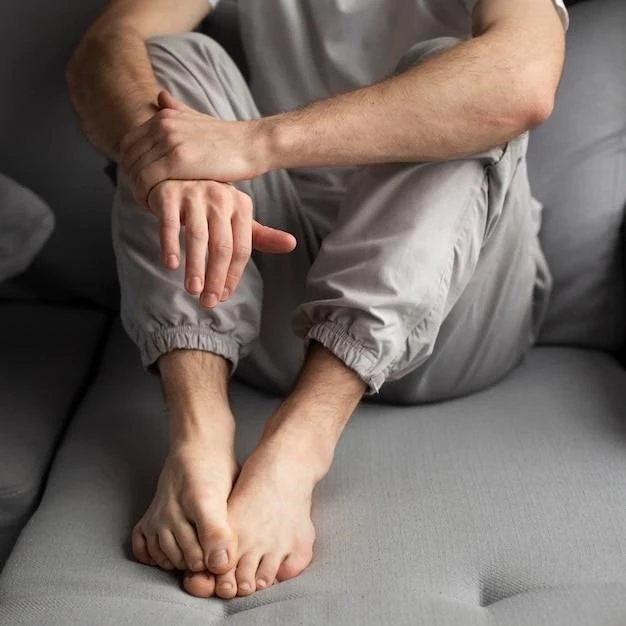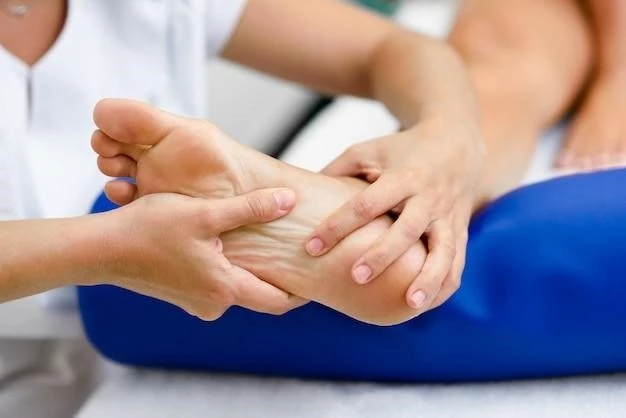Causes of Adducted Thumb Club Foot Syndrome
Causes of Adducted Thumb Club Foot Syndrome can be attributed to a variety of factors. These include genetic predisposition, environmental influences, and developmental abnormalities during fetal growth; Mutations in specific genes related to limb development can play a significant role in the manifestation of this syndrome. Additionally, factors such as maternal health, exposure to toxins, and certain medications during pregnancy may contribute to the condition.
Moreover, disruptions in the intricate process of limb formation in the womb can lead to the development of Adducted Thumb Club Foot Syndrome. In some cases, abnormalities in the positioning of the fetus in the uterus or issues with the amniotic fluid levels can also impact the growth and alignment of the limbs, leading to this congenital anomaly. Understanding these various causative factors is crucial in diagnosing and managing the condition effectively.
Symptoms and Diagnosis of Adducted Thumb Club Foot Syndrome
The Symptoms of Adducted Thumb Club Foot Syndrome typically present as abnormal positioning of the thumb and clubbed feet at birth. Infants with this syndrome may exhibit inwardly turned thumbs, where the thumb is positioned towards the palm, and a characteristic clubbed appearance of the feet, where the foot is twisted inward or downward. These physical manifestations are often noticeable during the newborn examination.
Diagnosis of Adducted Thumb Club Foot Syndrome involves a thorough physical examination by a healthcare provider, focusing on the hands and feet of the newborn. Imaging studies such as X-rays may be used to confirm the diagnosis and assess the extent of the deformities. Additionally, genetic testing may be recommended to identify any underlying genetic abnormalities associated with the syndrome. Early detection and diagnosis are crucial in initiating timely interventions to improve long-term outcomes for individuals affected by this condition.
Treatment Options for Adducted Thumb Club Foot Syndrome
Treatment for Adducted Thumb Club Foot Syndrome typically involves a multidisciplinary approach to address the complex orthopedic and developmental needs of affected individuals. Non-surgical interventions may include physical therapy to improve muscle strength and range of motion, orthotic devices to support proper foot alignment, and early intervention programs to facilitate optimal limb function.
In some cases, surgical interventions may be recommended to correct the deformities associated with this syndrome. Surgical procedures may involve tendon transfers, osteotomies, or soft tissue releases to realign the thumb and feet, improve function, and enhance overall mobility. The specific treatment plan for each individual is tailored to their unique presentation and may involve a combination of conservative and surgical interventions to achieve the best possible outcomes.
Prognosis and Complications of Adducted Thumb Club Foot Syndrome
The prognosis for individuals with Adducted Thumb Club Foot Syndrome varies depending on the severity of the condition, the timeliness of intervention, and individual response to treatment. With early diagnosis and appropriate management, many individuals can achieve significant improvements in thumb and foot positioning, function, and overall quality of life.
Despite advancements in treatment options, there may be potential complications associated with Adducted Thumb Club Foot Syndrome. These can include persistent deformities that impact hand and foot function, gait abnormalities, challenges with fine motor skills, and emotional or psychological implications due to physical differences. Regular follow-up care with healthcare providers, including orthopedic specialists and therapists, is essential to monitor progress, address any complications, and optimize long-term outcomes for individuals affected by this syndrome.
Management Strategies for Adducted Thumb Club Foot Syndrome
Effective management of Adducted Thumb Club Foot Syndrome involves a comprehensive approach that addresses the medical, orthopedic, and developmental needs of individuals with this condition. Management strategies typically include early intervention programs to promote proper limb alignment and function, physical therapy to improve muscle strength and range of motion, and occupational therapy to enhance fine motor skills.
Furthermore, ongoing follow-up care with a multidisciplinary team of healthcare professionals is essential to monitor progress, adjust treatment plans as needed, and provide support for both the individual and their family. Education and counseling regarding the condition, treatment options, and potential outcomes also form an integral part of the management process. By employing a holistic and individualized approach, the management of Adducted Thumb Club Foot Syndrome aims to optimize functional abilities and overall quality of life.
Genetic Factors in Adducted Thumb Club Foot Syndrome
Genetic factors play a significant role in the development of Adducted Thumb Club Foot Syndrome. Research has identified specific genes associated with limb development that, when mutated, can lead to the manifestation of this syndrome. These genetic abnormalities can affect the intricate processes involved in limb formation during fetal development, resulting in anomalies such as inwardly turned thumbs and clubbed feet.
Understanding the genetic basis of Adducted Thumb Club Foot Syndrome is crucial for both diagnosis and potential treatment strategies. Genetic testing may be recommended to identify mutations in relevant genes and provide valuable insights into the underlying mechanisms contributing to the condition. As research advances in the field of genetics, insights into the genetic factors associated with this syndrome continue to expand, offering potential opportunities for targeted interventions and personalized treatment approaches.
Surgical Interventions for Adducted Thumb Club Foot Syndrome

Surgical interventions are often considered in the treatment of individuals with Adducted Thumb Club Foot Syndrome to address severe deformities and improve functional outcomes. The specific surgical approach may vary depending on the extent of thumb and foot abnormalities, as well as the individual’s overall health and age.
Common surgical procedures for Adducted Thumb Club Foot Syndrome may include tendon transfers to correct thumb positioning, osteotomies to realign bones in the feet, or soft tissue releases to improve overall limb function. These interventions aim to restore proper alignment, enhance mobility, and reduce limitations associated with the syndrome. Close postoperative monitoring and rehabilitation are essential to optimize recovery and long-term outcomes for individuals undergoing surgical treatment for Adducted Thumb Club Foot Syndrome.
Research Advances in Adducted Thumb Club Foot Syndrome
Recent research in Adducted Thumb Club Foot Syndrome has focused on advancing our understanding of the genetic, developmental, and environmental factors contributing to this condition. Studies have elucidated key genes involved in limb development and the mechanisms that lead to thumb and foot abnormalities in affected individuals.
Furthermore, research efforts have explored innovative treatment modalities, such as gene therapy and regenerative medicine, to address the underlying causes of the syndrome and improve outcomes for patients. Collaborative studies involving multidisciplinary teams aim to enhance diagnostic techniques, refine surgical interventions, and develop personalized management strategies based on individual genetic profiles.
With ongoing research initiatives and technological advancements, the field of Adducted Thumb Club Foot Syndrome continues to evolve, offering promising avenues for novel therapeutic interventions and ultimately improving the quality of life for individuals affected by this congenital condition.
